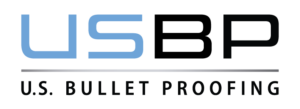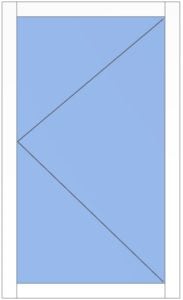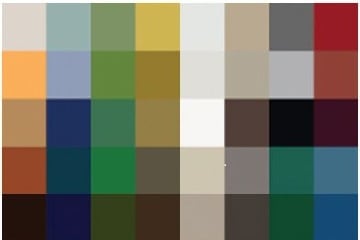Transparencies: The protected side of the transparency in some instances is polycarbonate and susceptible to scratching. Care should be taken when cleaning these surfaces. Use a mixture of liquid soap and water and clean, soft clothes or sponges for cleaning. The following cleaning agents have been found to be compatible with polycarbonate: Formula 409, Joy, Palmolive Liquid, Top Job, Windex with Ammonia D.
Fresh paint splashes, grease and smeared glazing compounds can be easily removed before drying by rubbing lightly with a good grade of VM&P naphtha, isopropyl alcohol or butyl cello solve (2- butoxy ethanol). Do not use butyl cello solve in direct sunlight.
Using a mild automobile polish can minimize scratches and minor abrasions. Three such products that tend to polish and fill scratches are: Johnson’s Paste Wax, Novus Plastic Polish #1 & #2 (Novus Inc., Minneapolis, MN), and Mirror Glaze Plastic Polish M.G.M10 (Mirror Brite Polish Co., Pasadena, CA). It is suggested that a test be made of a sample with the product selected and that the polish manufacturer’s instruction be followed.
Important Don’ts:
DO NOT use abrasive or highly alkaline cleaners on polycarbonate.
Never scrape or scrub polycarbonate with squeegees, brushes, razor blades, or other sharp instruments.
Taping notices, etc to this surface should be avoided. The tape adheres to the mar resistant coating and peels the coating off when the tape is removed.
DO NOT use benzene, gasoline, acetone or carbon tetrachloride on polycarbonate.
• DO NOT clean polycarbonate in hot sun or at elevated temperatures.
When cleaning glass, it is recommended that Windex with Ammonia D or other compatible household window cleaners be used to minimize streaking.
Aluminum: The aluminum trim can be cleaned similar to the transparent surfaces. Isopropyl alcohol can be used for tougher spots. Care should be taken not to scratch the aluminum surface.
Hardware: Maintenance of hardware devices should be in accordance with the manufacturer’s specifications. A common cause of failures in electrical devices is solenoid failure. This is most often due to power spikes or fluctuations. Improper grounding in some countries aggravates this situation.
Mechanical failures are most often caused by excessive amounts of dirt accumulating inside operating mechanisms. The use of lubricants such as WD40 and the like should be avoided. They act as a magnet in attracting dirt and sand. Another common cause of mechanical malfunctions is when devices are manhandled far beyond the manufacturer’s tolerances. If the locks are in proper adjustment, there is no need to use excessive force to open or close a device.
Warranty: All necessary replacement of parts and adjustments not occasioned by accident or misuse shall be made at the vendor’s expense when notified within 30 days after customer receipt of product. All products are warranted for a period of one year from the date of customer receipt. During warranty period, all defects not caused by attack, accident or misuse through fault or negligence by the customer shall be adjusted or replaced at the vendor’s expense (excluding transportation costs).
Disclaimer: In as much as U. S. Bulletproofing has no control over the use to which others may put this material, it does not guarantee that the same results, as those described herein will be obtained. Nor does USBP guarantee the effectiveness or safety of any possible or suggested design as illustrated herein by any photograph, technical drawing and the like. Each user of products or design or both should make his own tests to determine the suitability of the product or design or both for his own particular use.








